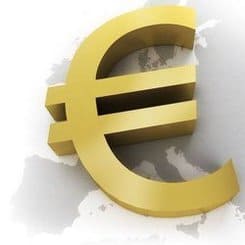Finance ministers met on Saturday and told the European Commission that the EU needs a massive stimulus to bolster growth. All options are being considered, from a massive investment fund to a Europe-wide capital market. The “save more” camp is rapidly losing ground to the “spend more” proponents from France and southern Europe.
In what ministers describe as the longest period of weak growth since the Great Depression, the Eurozone is knocking on the door of a deflationary recession.
During the second quarter of this year the currency bloc’s total GDP posted zero growth. Germany, the largest economy in the euro area, saw its economy shrink in Q2 2014.
In 2013, the Eurozone’s economy grew by just 0.1%. It has more than 20 million people unemployed – double the jobless rate in the US.
EU finance ministers have told the European Investment Bank (EIB), the EU Executive and the European Commission to put forward a list of programs:
- To stimulate economic growth,
- to detail how these plans would be funded.
Italian Economy Minister, Pier Carlo Padoan said he and his peers across the continent have given the EU agencies a mandate to rapidly come up with a preliminary report on feasible measures that could be implemented.
EU finance ministers meet again in October and expect to have the plans in front of them by then so that they may be discussed.
Five options examined
Yesterday, the ministers discussed five options for funding possible programs:

- A €300 billion investment program to stimulate the economy, proposed by incoming EU Commission President Jean-Claude Juncker,
- a joint proposal by Germany and France on increasing private investments,
- a €700 billion EU fund proposed by Poland,
- new financing tools aimed at companies, proposed by the Italian finance minister,
- re-introducing a market for asset-backed securities, proposed by the ECB.
French Finance Minister, Michel Sapin, stressed that stimulating demand is vital, but it needs to be done without increasing debt. “We don’t have a magic wand. We need the right mix of public and private money,” he added.
Gone are the “budget cuts” buzz phrases that dominated Europe for the last four years. They have given way to “investment” and “growth stimulus”. Italy and France are ramping up the pressure on fiscally strict Germany to loosen the reins.
French deficit up, GDP growth down
Earlier this week, Mr. Sapin announced that France’s GDP growth outlook had been revised downward to 0.4% for 2014, and that its public deficit will exceed the EU’s agreed limit again.
France’s public deficit will increase to 4.4% of GDP rather than fall to 3.8, he informed. This is the country’s first deficit rise in four years.
Public expenditure cuts will bring down the deficit to 4.3% in 2015 and below 3% in 2017, Mr. Sapin predicted.
Most analysts believe Brussels will take a dim view of France’s failure to rein in its deficit, after already having given the country a 2-year extension to get its house in order.
However, now that all finance ministers are talking about the need for stimulus, plus Sapin’s predecessor, socialist Pierre Moscovici joining the EU executive team as the EU Commissioner for Economic & Monetary Affairs, perhaps he now has some fiscal allies.
Germany is likely to take a middle view regarding the current enthusiasm to spend and print money. With funding and spending problems still unresolved, plus much-needed reforms in France, Italy and some other nations being ignored, Europe’s biggest economy is bound to continue insisting on fiscal discipline.
Germany’s Finance Minister Wolfgang Schaeuble appears to be trying to agree with both the the Keynesian (which favours government intervention in the economy) and monetarists camps. While supporting the quest for greater investment, he adamantly brushed aside calls for his government to spend more to boost the euro area economy.
ECB opening up
The finance ministers’ meeting was the first since Mario Draghi, head of the ECB, slashed interest rates and highlighted a 3-pronged strategy to bolster the Eurozone’s economy, which included pro-business reforms, extra government expenditure and more stimulus from the ECB.
Vitor Constancio, ECB’s vice president, said the central bank’s team backed the €300 million fund. He added that Eurozone investments needed to increase by at least 20% to reach the levels seen in 2007.
The ECB Governing Council has become increasingly alarmed at the deteriorating outlook for the currency block, which could kill what little economic momentum it currently has and undermine private investment.
The increased economic sanctions against Russia, plus the growing turmoil in the Middle East both have the potential to damage consumer confidence further, the central bank commented.
The ECB’s announcement that it would begin purchasing non-financial private sector assets falls short of the US Federal Reserves’ large-scale asset purchases several economists believe are needed.
The big question looming in Northern European polycimakers’ minds is: “Is spending more to boost the economy a good idea, or will the resulting high deficits scare off investors?”
